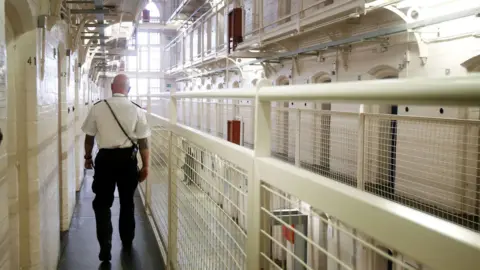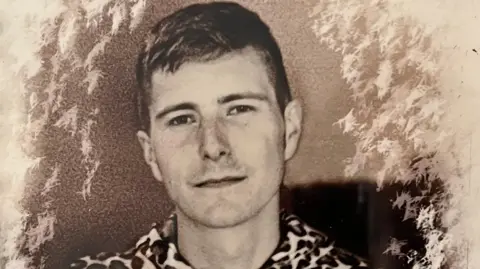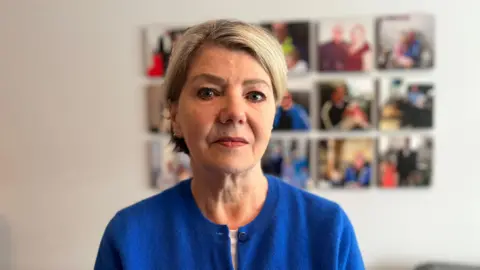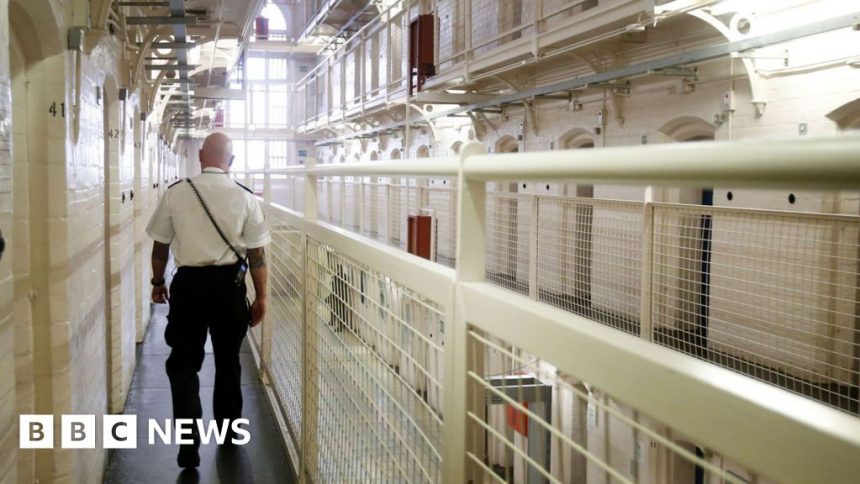Early release of hundreds of prisoners to begin
 PA Media
PA MediaThe first of up to 390 prisoners are being released early in the latest attempt to ease overcrowding in Scotland’s jails.
Emergency legislation was passed last year which allows eligible inmates sentenced to less than four years to be freed after 40% of their term, rather than 50%.
They will be released in three tranches over a six-week period, starting on Tuesday. Prisoners serving sentences for domestic abuse or sexual offences are excluded.
Justice Secretary Angela Constance said the prison population was “too high”.
“What we can’t have is overcrowded prisons because that is not in the interests of prisoners, staff and ultimately the community, because that means we are not rehabilitating people,” Constance said.
At the end of last week, there were 8,344 inmates in Scotland’s prisons – above the target operating capacity of 8,007.
Last summer 477 prisoners were released early in an emergency attempt to ease overcrowding.
But 61 ended up back in custody before their original planned release date, according to SPS data, and within two months the overall prison population had again risen above the level at which the releases began.
More than 1,700 prisoners were released early in England and Wales last autumn as part of a similar attempt by the UK government to ease overcrowding.
Release ‘traumatising’ for victims
The charity Victim Support Scotland (VSS) and the Scottish Prison Service (SPS) have jointly urged victims of crime to sign up for a scheme to be notified if they will be affected by a prisoner release.
Both organisations say only a small percentage of victims have joined, and VSS is calling for a more proactive approach than the current system which relies on victims to sign up.
Kate Wallace, chief executive of VSS, said some victims were “worried for their own and their family’s safety when someone’s being released from prison.”
Early releases had also raised anxiety amongst victims of older crimes, she said, sometimes causing renewed trauma.

Lynn Burns’ son Sam Johnston was 22 when he was stabbed to death at a house party in Saltcoats, North Ayrshire, in 2013.
Stuart McCulloch was convicted of Mr Johnston’s murder and sentenced to 13 years and five months in jail. His co-accused Allan Carey was convicted of culpable homicide and jailed for three years.
Ms Burns said she only found out that Carey had been released early after he arrived back in their home town.
“As a victim,” she said, “all we want is to feel safe in our communities.”
Carey’s release was “completely traumatising,” she explained, adding those feelings had resurfaced on hearing about the latest releases.
‘Pressure cooker’ Victorian jail
The notorious Barlinnie prison in Glasgow is at the forefront of overcrowding problems.
The Victorian jail, which opened in the 1880s, is now at 140% capacity with nearly 1,400 prisoners when it was designed for just 987.
The governor, Michael Stoney, has even admitted he would “struggle” to cope as an inmate there.
He described Scotland’s largest jail as a “pressure cooker” and said the new early release laws were necessary for staff and inmates although he accepted that some of those released early would “inevitably return” as part of a cycle of re-offending.
“In this prison we do the best we can. We have a real focus on those that are getting released under this scheme,” he said.
“You nudge people forward in terms of life development,” said Mr Stoney.
A controversial replacement for Barlinnie, HMP Glasgow, is being built at a cost of almost £1bn and due to open in 2028.
Prisoners ‘warehoused’
Former prisoner Jordan Robertson is building a new life as an artist after a series of short-term sentences for gang-related crime.
He knows well the impact of overcrowding.
“I’ve seen the deterioration of the system, because from the first time I was in to the last time I’ve seen it drastically get worse,” he told BBC Scotland News.
“You’re seeing people basically get warehoused because the courts can’t deal with the demand.”

Mr Robertson described the early release scheme as a “a very short term measure” to solve overcrowding rather than tackle reoffending.
He said it was a “quick fix” and rehabilitation was the “long game”.
Critics of the early release scheme, on both the left and right of politics, say it is an indictment of the Scottish government’s approach to criminal justice.
The Scottish Conservatives’ justice spokesman Liam Kerr said overcrowding was “a crisis entirely of the SNP’s own making,” pointing to their “catastrophic failure to build new prisons on time and on budget”.
Justice reform campaigners are also critical.
It is now more than 16 years since the report of the Scottish Prisons Commission, chaired by former Labour first minister Henry McLeish, urged a fresh approach.
It argued that while “Scotland imprisons more of its people than many other places in Europe,” high levels of incarceration had done little to tackle “real problems with violence, alcohol and drugs”.

Ms Burns, whose son was murdered, now helps other victims going through the justice system and she agrees fundamental change is needed.
On the one hand, she said, 40% of a sentence might not be enough time to rehabilitate a prisoner.
On the other, some prisoners were serving prison terms who should have been sentenced to alternatives.
She said some people should be in prison for the safety of the public, but there were other examples in the wider community where more could be done to rehabilitate those who had committed crimes.
Ms Burns continued: “How we punish and rehabilitate people should be an issue, and how we care for victims should be as big a priority. And I don’t believe it always is.
“What we’ve been doing is not working.”






